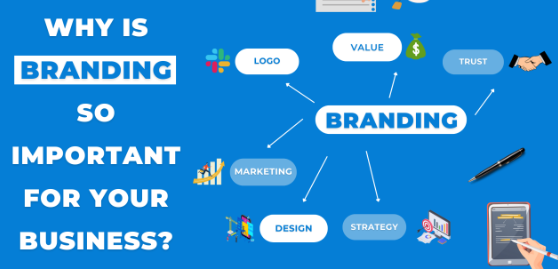In today’s rapidly evolving digital landscape, brand communication is essential to building strong relationships with your audience. Effective communication not only helps your brand stand out but also ensures long-term loyalty and trust. Here are seven proven strategies to enhance your brand communication and establish a lasting connection with your audience.
1. Develop a Consistent Brand Voice
Your brand voice is the unique tone and personality that your brand conveys through its communications. A consistent brand voice helps establish trust, familiarity, and recognition. When your audience encounters the same tone across different platforms, it reinforces your brand identity and ensures clarity in your messaging.
Why Consistency Matters: Consistency fosters recognition. When consumers see a uniform tone and style across platforms—whether it’s social media, email marketing, or customer support—it strengthens their perception of your brand. This dependability leads to deeper connections and long-term customer loyalty.
How to Define Your Brand Voice: To establish a consistent brand voice, start by defining the core values that represent your business. Think about the following:
- Brand Personality: Is your brand playful and friendly or formal and professional?
- Language Style: Should the tone be conversational, casual, or more structured and official?
- Audience Expectations: Understand the voice that will resonate best with your target audience. A younger demographic might appreciate an informal tone, while an older or more business-oriented audience may respond better to professionalism and clarity.
Once you’ve defined your voice, ensure it’s applied across all platforms, from blog content to customer service interactions. While consistency is key, don’t be afraid to adjust your tone slightly to suit the platform—social media might allow for a more casual approach, while formal reports or press releases may require a more structured tone.
2. Harness the Power of Storytelling
Humans are naturally drawn to stories, making storytelling one of the most powerful tools for brand communication. A well-crafted story humanizes your brand, making it more relatable and memorable. Instead of simply highlighting features of your products or services, share stories that convey your brand’s mission, values, and the positive impact you make on your customers.
Key Storytelling Elements:
- Your Brand’s Origin: Share your brand’s journey—how it started, the challenges you’ve overcome, and how you’ve evolved.
- Customer Stories: Testimonials or case studies are great ways to illustrate the impact your brand has had on people’s lives. Let your customers become part of your brand’s narrative.
- Visual Storytelling: Engage with multimedia content like videos, infographics, and images to bring your stories to life.
Encourage user-generated content by asking your audience to share their experiences. This not only adds authenticity but also fosters a community around your brand.
3. Leverage Multichannel Communication
In today’s omnichannel world, your audience interacts with your brand across various platforms—from social media and emails to websites and customer service touchpoints. To ensure effective communication, it’s important to tailor your content to each platform while maintaining a consistent brand voice.
Adapting Content for Different Channels:
- Social Media: Platforms like Instagram or TikTok thrive on visual content. Focus on engaging imagery, videos, and interactive elements to capture attention.
- LinkedIn: Use more professional and in-depth content, such as thought leadership articles and industry insights, for business-focused audiences.
- Email Marketing: Personalize your email content, making use of segmentation to deliver relevant messages to different customer segments.
Even as you adjust your approach for each platform, consistency remains key. Your brand’s tone, style, and messaging should always align, ensuring that whether someone reads an email or views a TikTok video, they are interacting with the same recognizable brand.
4. Invest in Visual Branding
Visuals are a crucial part of brand communication. From your logo to website design and social media graphics, your visual identity plays a significant role in how your brand is perceived and remembered.
Building a Strong Visual Identity:
- Logo and Colors: Your logo should be distinctive, memorable, and reflect your brand’s core values. A cohesive color palette will help tie your visual elements together.
- Website Design: A well-designed, user-friendly website not only enhances user experience but also reinforces your brand identity. High-quality visuals and easy navigation contribute to a professional, polished appearance.
- Social Media Graphics: Use consistent templates and themes to maintain a unified look across your social platforms. This will help in creating brand recognition even in highly visual environments.
Invest in quality photography, graphic design, and videography to make your visuals stand out and communicate professionalism and creativity.
5. Practice Active Listening
Effective brand communication is a two-way street. Engaging in active listening enables you to understand your audience’s preferences, sentiments, and feedback. This insight can inform your messaging and help you stay in tune with your audience’s needs.
Tools for Active Listening: Social listening tools help you monitor mentions of your brand and track discussions across social media and review platforms. These insights allow you to respond quickly to customer feedback, address concerns, and show that you value your audience’s opinions.
Building Customer Relationships: Engaging with your audience on a personal level—whether through direct communication or via social platforms—shows that you are listening and responsive to their needs. Acknowledging feedback, offering solutions, and making improvements based on audience input will strengthen trust and loyalty.
6. Personalize Your Communication
In today’s competitive marketplace, personalized communication is key to making your audience feel valued. Personalization ensures that your content is relevant, timely, and aligned with the specific needs and interests of your audience.
Effective Personalization Techniques:
- Audience Segmentation: Use customer data to segment your audience based on demographics, interests, or past behavior. This allows you to tailor your messaging to meet the specific needs of each segment.
- Customized Recommendations: Offer personalized product or content recommendations based on user behavior, such as browsing history or past purchases.
- Personalized Emails: Address customers by name and send tailored content based on their preferences or past interactions with your brand.
Personalization leads to higher engagement and builds stronger relationships with your audience. When customers feel that a brand understands and caters to their individual needs, they are more likely to remain loyal.
7. Build a Brand Community
Creating a strong community around your brand fosters loyalty, advocacy, and engagement. When your customers feel like they are part of a community, they are more likely to become brand advocates and recommend your products or services to others.
How to Foster a Community:
- Social Media Groups: Platforms like Facebook and LinkedIn offer opportunities to create exclusive groups for your audience. These groups can serve as a space for customers to engage with your brand and connect with others who share similar interests.
- Online Forums: Consider creating a branded forum or discussion board on your website. This space can encourage meaningful conversations about your brand and help you gather feedback from your most dedicated customers.
- Branded Events: Host online or offline events, such as webinars, workshops, or meet-ups, to bring your community together and strengthen relationships.
By nurturing a community, you create a network of loyal customers who feel connected to your brand on a deeper level. This not only boosts customer retention but also amplifies your reach through positive word-of-mouth.
Conclusion
Effective brand communication is essential to standing out in today’s crowded marketplace. By developing a consistent brand voice, harnessing the power of storytelling, leveraging multiple channels, investing in visual branding, practicing active listening, personalizing your communication, and fostering a community, you can build strong, lasting relationships with your audience.
Remember that brand communication is an ongoing process that requires adaptation to new trends, technologies, and consumer behaviors. Stay proactive, listen to your audience, and continuously refine your strategies to ensure your brand remains relevant and engaging.
By implementing these proven strategies, your brand will not only resonate with your target audience but also thrive in the ever-changing digital landscape.




